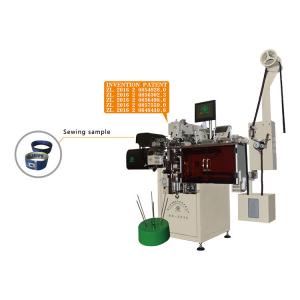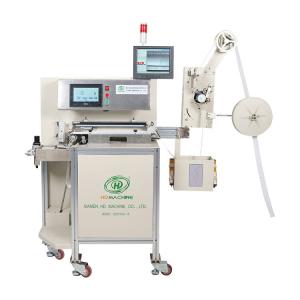- English
- Español
- Português
- русский
- Français
- 日本語
- Deutsch
- tiếng Việt
- Italiano
- Nederlands
- ภาษาไทย
- Polski
- 한국어
- Svenska
- magyar
- Malay
- বাংলা ভাষার
- Dansk
- Suomi
- हिन्दी
- Pilipino
- Türkçe
- Gaeilge
- العربية
- Indonesia
- Norsk
- تمل
- český
- ελληνικά
- український
- Javanese
- فارسی
- தமிழ்
- తెలుగు
- नेपाली
- Burmese
- български
- ລາວ
- Latine
- Қазақша
- Euskal
- Azərbaycan
- Slovenský jazyk
- Македонски
- Lietuvos
- Eesti Keel
- Română
- Slovenski
- मराठी
- Srpski језик
- 简体中文
Why choose High Tech Automated Sewing Device over manual labor?
2025-09-28
In manufacturing sectors reliant on sewing, such as apparel, home textiles, and luggage, as labor costs continue to rise, more and more manufacturers are adopting High Tech Automated Sewing Device to enhance their competitiveness and ensure sustainable development.

Improved Production Efficiency
High Tech Automated Sewing Device can operate continuously and stably for extended periods, unaffected by fatigue, emotions, or physiological needs. It operates at speeds far exceeding those of human operators and precisely repeats pre-set sewing paths and processes. The efficiency gains are particularly dramatic when handling standardized or repetitive processes such as straight stitching, pattern sewing, overlocking, button sewing, and bag opening. A single machine can often complete the work of multiple workers, effectively shortening product production cycles and significantly increasing output per unit time. This is crucial for meeting large-scale order fulfillment and sewing market opportunities.
Quality Stability
Manual sewing inevitably involves individual differences, and even the same worker can produce subtle variations in sewing results due to fluctuations in work conditions. High Tech Automated Sewing Device relies on sophisticated control systems and pre-programmed routines to ensure highly accurate and consistent stitch length, thread tension, and thread placement for each stitch. This eliminates the risk of defects caused by human error, such as skewed stitches, skipped stitches, and improper thread breakage. This significantly reduces rework and defective product rates, ensures consistent quality across batches, and enhances brand reputation and customer satisfaction.

Long-Term Cost Optimization
Although the initial investment in High Tech Automated Sewing Device is high, its long-term cost-effectiveness is significant. On the one hand, it significantly reduces reliance on skilled sewing labor, which is expensive and increasingly scarce, alleviating the pressure of rising labor costs. On the other hand, increased production efficiency dilutes the manufacturing cost per unit. Furthermore, reduced defective products and rework mean less material waste and the avoidance of potential quality compensation. The increased stability of equipment operation also reduces the risk of production interruptions. After a reasonable return on investment (ROI) calculation, automation generally leads to overall cost reductions.
Addressing Labor Shortages
The sewing industry generally faces challenges such as a reluctance among young workers, high turnover of skilled workers, and difficulty recruiting. Reliance on manpower often means production lines fluctuate or even stall due to staff turnover or absences. High Tech Automated Sewing Device, however, is not subject to this burden and serves as a reliable pillar for stable production capacity. It ensures the rigid execution of production plans, reduces the risk of order delays caused by labor shortages, and makes business operations more predictable and controllable.
| Benefit Category | Key Advantages |
|---|---|
| Production Efficiency | Continuous high speed operation Precise repetition of preset paths Replaces multiple workers Shortens production cycles |
| Quality Stability | Consistent stitch accuracy Eliminates human error defects Uniform output across batches Reduces rework rates |
| Cost Optimization | Reduces skilled labor dependency Lowers per unit costs Minimizes material waste Avoids production stoppages |
| Labor Solution | Operates without fatigue Unaffected by staff turnover Ensures production continuity Meets deadlines reliably |


